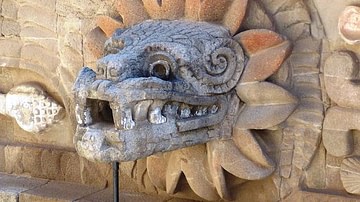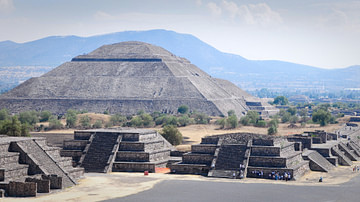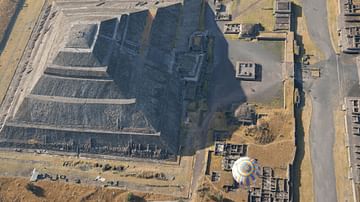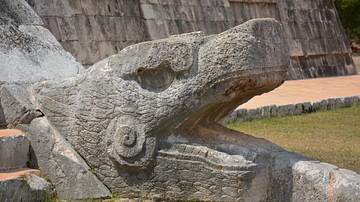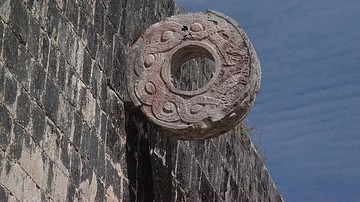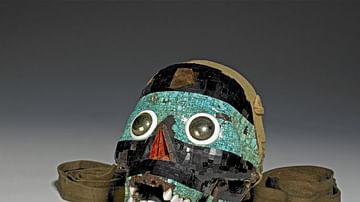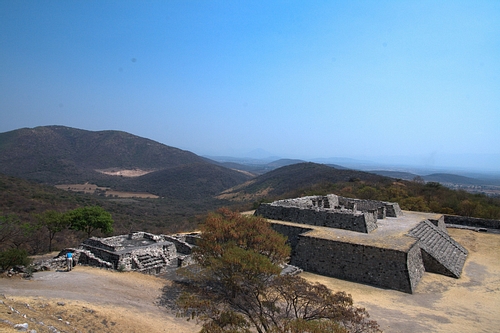
Xochicalco in central Mexico was an important hilltop centre from the 8th century CE and was a rival and successor of Teotihuacán. Architecture at the site is closely connected to that of the Classic Maya, Teotihuacan, and Veracruz, and contact was also established with the Mixtec Oaxaca and Zapotec civilizations. Blending these various cultural elements to create their own idiosyncratic art and architecture, the Xochicalco culture probably went on to influence the later Toltec and all subsequent Mesoamerican civilizations. The site, like many contemporary hilltop centres, was abandoned at the end of the Epiclassic period, around 900 CE. Xochicalco is listed by UNESCO as a World Heritage Site.
Early Settlement
Founded c. 700 CE or even before, Xochicalco, 130 km southwest of Cacaxtla and perched above the Cuernavaca Valley, was built on a hill which was re-shaped by levelling and terracing certain areas to create an acropolis of four concentric terraces. A straight path on the southern side gives access from the valley floor. Although early pottery shares many similarities to that found elsewhere in central Mexico, there seems to have been very little outside contact in later times. Any links to the Maya seem to have been via the coast settlements, and the iconography in many relief carvings at Xochicalco has a strong Mayan and Teotihuacan influence.
Xochicalco was eventually fortified and contained three distinct areas containing regular plazas, sacred precincts, paved causeways, a large pyramidal platform, and an I-shaped ball-court, all oriented along the cardinal points. The large slanted wall ball-court is located in the centre of the site, and it may be the oldest such structure in central Mexico, whilst the western platform contains a sweat-bath consisting of several rooms with benches. Another feature of the site is the presence of caves in the hillsides which were used for storage and, in one case, as an underground observatory. This latter cave has a man-made shaft to the sky, through which, on just two days in the year, the sun shines directly down into the cave.
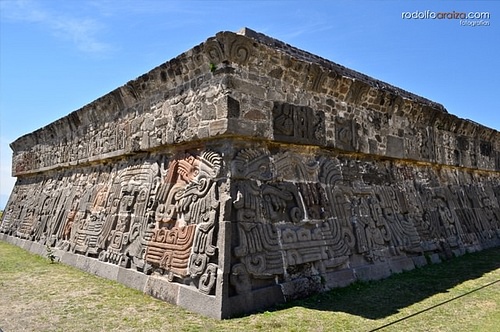
Architecture
The large open plaza with three temples is accessed by a short flight of stairs. Dominating the space is the large platform temple of Xochicalco known as the Pyramid of the Feathered Serpent which was constructed sometime prior to 900 CE. It measures 19.6 m x 21 m, is aligned on an east-west access, and consists of sloping walls which create a square, roofless courtyard. There is a stepped entrance on the west side which has balustrades with carved serpents. The outer walls carry impressive decorative relief sculpture divided into rectangular scenes - larger scenes at the lower level and smaller rectangles above. All of these reliefs were originally brightly painted in red, green, yellow, blue, black and white, traces of which still remain. In the lower sections there are six writhing feathered rattle-snakes, early depictions of the creature which would appear in all forms of Mesoamerican art and be identified with the god Kukulkán or Quetzalcoatl. Between the curves of the snake sit men, each wearing an animal headdress. Each of the smaller scenes depicts glyphs and a seated warrior. Above all of these is another, smaller frieze with pairs of seated men in Maya dress separated by calendar signs which may represent a succession of Xochicalco rulers, or the figures may represent either priests or gods and each holds a sort of fan - probably an indication of their rank - and is wearing a headdress.
Xochicalco Writing
The glyphs or signs depicted on the monument, often of unidentified place names but also parts of speech, are a strange and unique combination of Aztec day signs and symbols within a Maya cartouche, whilst the numerals are similar to those used by the Zapotec. Indeed the scribes of Xochicalco may have been the first experimenters of a writing system, elements of which would become standard from the 13th century CE in Mesoamerica. The places referred to in the friezes may indicate a political association between sites or indicate places which offered tribute to Xochicalco. The glyphs also appear on three stelae found at the site. These large stone monuments are between 1.4 and 1.5 m tall, and they also carry familiar central Mexican imagery such as a jaguar-snake mask, sky bands, and the goggle-eyed and fanged rain god Tlaloc. The stelae now reside in the National Museum of Anthropology in Mexico City.
